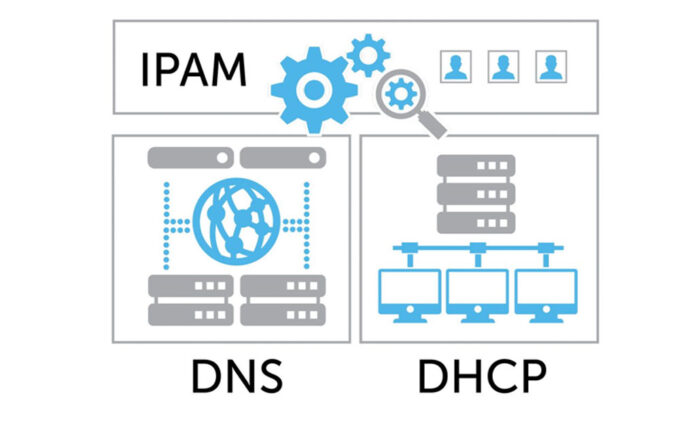Table of Contents
An important component of the contemporary network is IPAM, together with DHCP, DNS, and other technologies referred to as DDI. Manual IP assignment and spreadsheet-based tracking are incompatible with the operation of bigger networks. Nevertheless, IPAM’s fundamental infrastructure is now 20 years old and hasn’t changed to support contemporary application patterns.
In this article, we will discuss dns-dhcp-ipam as a concept and will tell you the reasons why your business can profit from employing them.
What is DDI?
The Domain Name System (DNS), Dynamic Host Configuration Protocol (DHCP), and IP address management are combined into DDI, or DNS-DHCP-IPAM (IPAM).
The three pieces together form an integral portion of the DDI. Companies that manage and control IP resources will find this bundle to be especially beneficial. To enhance their network administration, businesses, for instance, might centralize DNS, DHCP, and IP address services onto a single platform.
DNS
IP addresses are converted into domain names that are easy to remember by the Domain Name System (DNS). Internet users no longer need to memorize lengthy IP numbers to access a website thanks to DNS. For instance, you don’t have to keep in mind the IP 64.233.191.200 to access google.com. Without a doubt, DNS is a crucial component of DDI. Since DNS links internet users to websites and services, it is responsible for driving HTTP web traffic.
Easily updating and editing DNS records is possible for network administrators if IPAM or DHCP systems are connected with DNS. If IP addresses change, prompt changes guarantee effective service transfer.
DHCP
Network administration protocols include DHCP (Dynamic Host Configuration Protocol). It changes the IP addresses of the network’s devices on a dynamic basis. Assignment of a dynamic IP address happens automatically.
For instance, when a new device joins a network, it asks a DHCP server for an IP address. The device is then given an IP address by the DHCP server automatically. The gadget can finally establish effective connections to both the internal network and the internet.
DHCP and IPAM integration ensures total automation and centralization. To put it another way, without DHCP, network administrators would have to manually configure the network by the IP resource plan, a method for allocating IP resources.
On the other side, without IPAM, DHCP also wouldn’t give a complete picture of the network.
IPAM
IP address management is abbreviated as IPAM. The DDI’s management plane, also known as its foundational layer, aids in managing, keeping track of, and controlling a network’s IP address space.
In other words, network administrators can effectively manage IP addresses with IPAM software. Inspection of assigned and unassigned IP addresses, related information about subnets, and related hardware is possible thanks to the IP address management system.
Additionally, IPAM software gives network administrators access to a single interface where they can view IP address records and the entire IP address system. Network administrators can examine, inspect, and keep the infrastructure resources current with all the data in one central location.
What Are The Benefits Of Using Dns-Dhcp-Ipam?
DNS-DHCP-IPAM is a powerful and cost-effective way to manage an organization’s network infrastructure. By combining DNS, DHCP, and IP Address Management (IPAM) technologies into an integrated solution, organizations can gain greater control of their networking environment while also reducing costs. But what are the specific benefits that come from using this type of solution?
One key benefit of deploying a DNS-DHCP-IPAM solution is the ability to easily track, manage and update critical information about all connected devices on the network. With these systems in place, users can quickly assign static IP addresses for any device or application that needs it and then use advanced search functions to find out which servers or PCs have been assigned those particular addresses. This eliminates manual configuration tasks as well as potential errors caused by misconfiguration or typos when entering manually written data. Additionally, if there are changes needed within the network topology – such as a new subnet being added or an existing one removed – these updates can be made with ease through the centralized management interface provided by many solutions in this space.
A further advantage of implementing a DNS-DHCP-IPAM system is improved security against malicious attacks due to increased visibility across networks. For example, administrators can identify suspicious activity more quickly since they will no longer need to rely solely on logs from individual firewalls but instead will have access to real-time traffic analysis tools that provide insight into how different parts of the network interact with each other. This helps ensure that only authorized machines receive access and keeps unauthorized actors at bay.
Identity Checks And Carried
In addition, because identity checks are carried out automatically during user authentication processes, chances for human error caused by incorrectly entered credentials are eliminated too.
By providing comprehensive oversight over complex networks along with enhanced security features, DNS-DHCP-IPAM solutions offer numerous advantages for organizations looking to streamline their IT operations while improving efficiency levels throughout their business. Moving forward, knowing how to set up such a system properly becomes essential in order to maximize its potential benefits and keep your company’s data secure.
Maintaining And Troubleshooting Dns-Dhcp-Ipam
Maintaining and troubleshooting DNS-DHCP-IPAM requires a meticulous mindset, as well as the right tools. Technicians must take time to properly configure, monitor, and diagnose issues with their network infrastructure for optimal performance and reliability. Practical processes such as patching, validating configuration settings, collecting logs, and configuring alerts are essential steps in ensuring that any potential problems can be swiftly addressed.
Troubleshooting is an integral part of maintaining DNS-DHCP-IPAM systems. To identify the root cause of any issue quickly and accurately, technicians need to have a good understanding of how all components interact with each other. They should also have experience in analyzing log files from various systems involved in order to detect anomalies or errors early on before they become serious problems.
To ensure that DNS-DHCP-IPAM networks remain secure and stable long term. It’s important to regularly audit configurations against security best practices. This includes checking access control lists (ACLs), and evaluating authentication mechanisms implemented. Across multiple layers of the system architecture, monitoring traffic patterns for suspicious activity. And running vulnerability scans at regular intervals. Taking these precautionary measures helps protect against threats while keeping uptime high. Moving forward then into securing dns-dhcp-ipam makes sense. As without adequate protection, implementations may not provide the expected results over time.
Monitoring Dns-Dhcp-Ipam Performance
Monitoring the performance of DNS-DHCP-IPAM is essential to ensuring a stable, secure, and reliable network infrastructure. Being able to measure the responsiveness, capacity, and reliability of these services on a continuous basis can help identify any issues or potential problems before they become serious. It is also useful for providing information about resource utilization which helps in planning for future needs.
Monitoring performance effectively requires collecting data from various components such as servers, clients, network devices, and applications that use these services. This data should be carefully analyzed and monitored over time so that trends can be identified quickly. In addition to this system, logs should be reviewed regularly to ensure errors are rectified promptly and security threats are addressed adequately. Ensuring the high availability of DNS-DHCP-IPAM is paramount since it underpins most other activities on the network.
Conclusion
The implementation of DNS-DHCP-IPAM offers a powerful foundation for modern network infrastructures. It allows administrators to easily manage and configure IP addresses. As well as the ability to dynamically assign them when necessary. As with any technology, there are associated costs and risks. That must be taken into account before making a decision about whether or not to implement it. However, if done properly, this tool can help ensure reliable performance. And the stability of your network infrastructure for years to come. Ultimately, the use of DNS-DHCP-IPAM is an essential part of creating a secure and efficient network environment.















